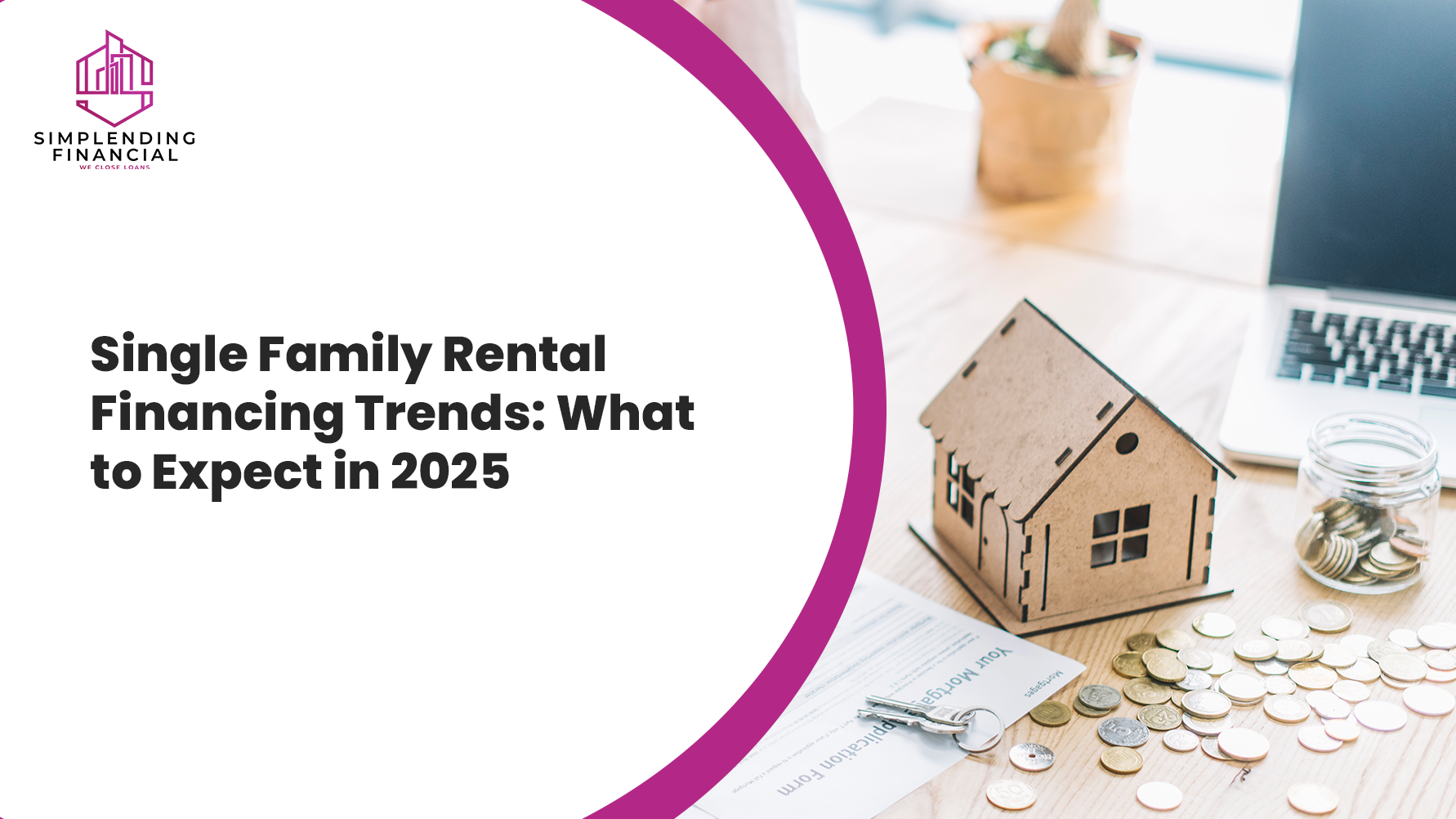Single Family Rental Financing Trends: What to Expect in 2025
31 Mar 2025
Posted By Admin
The single-family rental (SFR) market has been a dominant force in real estate investment over the past decade. With rising home prices, increasing rental demand, and shifting economic conditions, financing options for single-family rental properties are evolving. As we move into 2025, investors must stay ahead of the latest trends to secure the best funding for their portfolios. This article discusses the major financing trends driving the SFR market, such as new lending approaches, rate volatility, and other funding sources.
1. The Increasing Demand for Single-Family Rentals
The need for single-family rentals has increased because of a number of factors, such as affordability issues among homebuyers, remote work patterns, and a desire for suburban lifestyles. Most families and young professionals are opting to rent rather than purchase, which is fueling the demand for additional rental properties. The increasing demand has turned single family rental loans into a necessary instrument for investors who want to purchase and grow their rental portfolios.
2. Interest Rates and How They Affect SFR Financing
Interest rates influence real estate financing, and 2025 will likely see more ups and downs. In recent years, the Federal Reserve has manipulated rates to fight inflation, requiring borrowers to pay higher costs to borrow money. Experts do see some stabilization in 2025, however, permitting investors to borrow at more stable interest rates.
Increased interest rates typically prompt investors to seek out creative financing vehicles like adjustable-rate mortgages (ARMs), interest-only loans, and portfolio loans. Knowledge of the impact of rate changes on cash flow and returns over the longer term will be essential for SFR investors.
3. The Emergence of Private and Non-Bank Lenders
Conventional banks have long been a default source of financing for real estate, but tight lending standards have forced investors into alternative lenders. Single family rental lenders, such as private lenders, debt funds, and institutional investors, are increasingly financing rental properties.
These private lenders provide more accommodating terms, quicker approval, and individualized loan structures best suited to meet investors' distinctive requirements. In 2025, growing competition among private lenders will make it more innovative in loan products and rates.
4. The Rise in Popularity of DSCR Loans
Debt Service Coverage Ratio (DSCR) loans are a popular financing choice for single-family rental property investors. DSCR loans differ from conventional loans based on the income of the borrower since they use the rental income of the property to ascertain loan eligibility.This type of loan is especially compelling to investors holding multiple properties or self-employed homebuyers that might not be eligible for standard lending requirements. As rental incomes continue to spike in most markets, DSCR loans will find themselves an increasingly prevalent financing weapon in 2025.
5. Government-Supported Loan Schemes for SFR Investors
Government-sponsored loans, like Fannie Mae and Freddie Mac's investor-friendly mortgage schemes, are likely to continue as a viable alternative in 2025. The schemes provide competitive rates and extended terms of loans, which make them suitable for investors who plan to hold on to properties in the long run.
Also, increasing backing exists for policies promoting rental housing development. New legislation could bring investors access to further financing incentives, including tax credits and grants for affordable rental housing developments.
6. The Impact of Technology on SFR Financing
Technology is reshaping the real estate financing industry, making it easier for investors to secure funding. Digital lending platforms, automated underwriting, and blockchain-based transactions are streamlining the loan application process.
In 2025, we expect more lenders to implement AI-powered risk assessments so that loans get approved quickly and interest rates get customized more efficiently. Crowdfunding platforms and tokenized real estate investments are also providing new opportunities for investors seeking to raise money beyond traditional lending.
7. Innovative Financing Approaches for Investors
With more stringent lending guidelines and changing interest rates, numerous investors are considering innovative financing techniques in order to purchase single-family rentals. Some of the best solutions in 2025 will be:
- Seller Financing: Whereby property sellers become the lender, who will accept payments from buyers directly in place of getting a conventional mortgage.
- BRRRR Method (Buy, Rehab, Rent, Refinance, Repeat): An investment strategy that enables investors to buy distressed properties, fix them up, rent them out, and refinance in order to tap into equity to fund future deals.
- Joint Ventures & Partnerships: Investors are more and more partnering with other investors or companies to raise money and split the profits.
All these strategies give investors flexibility and enable them to expand their portfolios regardless of market fluctuations.
8. The Institutional Investor's Role in the SFR Market
Institutional investors like hedge funds and REITs (Real Estate Investment Trusts) have been making a push into the single-family rental arena. Their block-sized purchases and capacity to shell out cash for homes have rendered it increasingly difficult for individual buyers to compete.
But this trend has also opened up new financing possibilities. Institutional lenders are now providing more competitive loans to small and mid-cap investors, making bulk financing and improved loan terms more accessible. Investors who know how to work in this changing environment will be better suited to success in 2025.
9. The Future of SFR Financing in Secondary and Tertiary Markets
While large metropolitan markets have long been the focal point of SFR investments, secondary and tertiary markets are increasingly getting attention. Such smaller cities and suburbs provide relatively lower property rates, high demand for rentals, and favorable funding options.
Financial institutions are starting to notice the trend and growing their lending provisions to include wider areas. SFR investors looking at high-growth but non-competitive marketplaces will discover improved funding availability and more opportunities for investment in 2025.
10. The Future of SFR Financing in 2025 and Beyond
As the real estate industry continues to change, financing patterns for single-family rentals will do the same. Investors should expect:
- Sustained demand for rental homes, fueled by housing affordability issues.
- Increased flexibility and investor-friendly lending from alternative and private lenders.
- Sophisticated technology simplifying the loan application and approval process.
- Expansion of government-backed initiatives to facilitate rental housing construction.
- Increased demand for energy-efficient and sustainable rental homes, resulting in novel financing incentives.
By keeping an eye on this evolving situation and adjusting accordingly, real estate investors can effectively navigate the shifting financing environment and continue constructing lucrative single-family rental portfolios in 2025.
The future of single family rental financing is evolving, with new possibilities on the horizon as well as changes within the market. As a seasoned investor or a beginner in the market, it is essential to understand these trends for making the right decisions and availing the best financing options for your investments.


